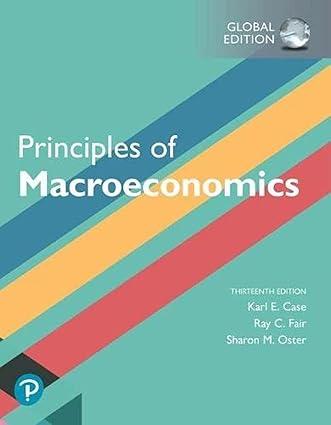In 2016, $53 billion of frozen foods were sold in U.S. grocery stores, one quarter of it
Question:
In 2016, $53 billion of frozen foods were sold in U.S. grocery stores, one quarter of it in the form of frozen dinners and entrées. In the mid-1950s, sales of frozen foods amounted to only $1 billion, a tiny fraction of the overall grocery store sales. One industry observer attributes this growth to the fact that frozen food tastes much better than it did in the past. Can you think of anything else that might be occurring?
The growth of the frozen dinner entrée market in the last 50 years is a good example of the role of opportunity costs in our lives. One of the most significant social changes in the U.S. economy in this period has been the increased participation of women in the labor force. In 1950, only 24 percent of married women worked; by 2013, that fraction had risen to 58 percent. Producing a meal takes two basic ingredients: food and time.
When both husbands and wives work, the opportunity cost of time for housework—including making meals—goes up. This tells us that making a home-cooked meal became more expensive in the last 50 years. A natural result is to shift people toward labor-saving ways to make meals. Frozen foods are an obvious solution to the problem of increased opportunity costs.
Another, somewhat more subtle, opportunity cost story is at work encouraging the consumption of frozen foods. In 1960, the first microwave oven was introduced. The spread of this device into America’s kitchens was rapid. The microwave turned out to be a quick way to defrost and cook those frozen entrées. So this technology lowered the opportunity cost of making frozen dinners, reinforcing the advantage these meals had over home-cooked meals. Microwaves made cooking with frozen foods cheaper once opportunity cost was considered while home-cooked meals were becoming more expensive.
The entrepreneurs among you also might recognize that the rise we described in the opportunity cost of the homecooked meal contributed in part to the spread of the microwave, creating a reinforcing cycle. In fact, many entrepreneurs find that the simple tools of economics—like the idea of opportunity costs—help them anticipate what products will be profitable for them to produce in the future. The growth of the two-worker family has stimulated many entrepreneurs to search for labor-saving solutions to family tasks.
The public policy students among you might be interested to know that some researchers attribute part of the growth in obesity in the United States to the lower opportunity costs of making meals associated with the growth of the markets for frozen foods and the microwave.
Question
Many people think that soda consumption also leads to increased obesity. Many schools have banned the sale of soda in vending machines. Use the idea of opportunity costs to explain why some people think these bans will reduce consumption. Do you agree?
Step by Step Answer:

Principles Of Macroeconomics
ISBN: 9781292303826
13th Global Edition
Authors: Karl E. Case,Ray C. Fair , Sharon E. Oster





